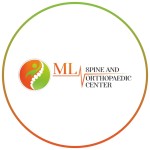Orthopedic conditions, such as arthritis, osteoporosis, scoliosis, and various joint disorders, can significantly impact a person’s quality of life. Left untreated, these conditions can lead to chronic pain, decreased mobility, and even permanent disability. Early detection and intervention are crucial in managing these conditions effectively and ensuring the best possible outcomes for patients. In this blog, we will explore why early detection is so important in orthopedic care and how it can make a significant difference in the long-term health and well-being of individuals.
1. Preventing Further Damage
One of the primary reasons early detection is critical in orthopedic conditions is to prevent further damage. Many orthopedic issues, such as osteoarthritis or tendonitis, can start as minor discomfort or pain. If these early signs are ignored or misdiagnosed, the condition can worsen over time, leading to more severe damage. For example, untreated osteoarthritis can cause extensive joint damage, leading to a complete loss of joint function and the need for joint replacement surgery. Detecting and addressing these conditions early, with the help of a top Orthopedic Hospital, can prevent such progression and help maintain joint health
2. Reducing Pain and Improving Quality of Life
Chronic pain is a common symptom of many orthopedic conditions. By detecting these issues early, healthcare providers can develop a treatment plan that alleviates pain and improves the patient’s quality of life. Early intervention can involve non-surgical treatments such as physical therapy, medications, and lifestyle modifications that help manage pain and improve mobility. When conditions are caught early, there is a greater chance of avoiding more invasive treatments like surgery, which can have longer recovery times and associated risks.
3. Increasing Treatment Options
The earlier an orthopedic condition is detected, the more treatment options are available to the patient. For example, in the case of scoliosis, detecting the condition early in adolescents allows for the use of braces to correct spinal curvature and prevent it from worsening. Similarly, early detection of osteoporosis allows for medications and lifestyle changes to strengthen bones and reduce the risk of fractures. When conditions are diagnosed at a later stage, options may be limited, and more aggressive treatments may be necessary.
4. Enhancing Recovery and Rehabilitation
Early detection often leads to more successful outcomes and quicker recovery times. When orthopedic conditions are identified early, less invasive treatments can be employed, and rehabilitation can begin sooner. This is particularly important for athletes and active individuals who wish to return to their normal activities as quickly as possible. Early intervention can also reduce the risk of complications and improve the overall effectiveness of rehabilitation programs.
5. Lowering Healthcare Costs
Delaying treatment for orthopedic conditions can result in higher healthcare costs due to the need for more intensive treatments, longer hospital stays, and extended rehabilitation periods. Early detection and treatment can reduce these costs by addressing issues before they become more severe. This proactive approach not only benefits the patient by reducing the financial burden but also helps healthcare systems by lowering the overall cost of care.
6. Preventing Secondary Health Issues
Orthopedic conditions can lead to secondary health issues if not managed properly. For instance, a person with untreated knee arthritis may alter their gait to avoid pain, leading to hip or back problems. Similarly, spinal conditions like scoliosis, if left untreated, can cause respiratory and cardiovascular issues due to the compression of internal organs. Seeking early detection and treatment at a specialized best spine hospital helps prevent these secondary complications by addressing the root cause of the problem early on.
7. Empowering Patients with Knowledge and Control
Early detection empowers patients with the knowledge and control they need to manage their conditions effectively. When patients are diagnosed early, they have more time to understand their condition, explore their treatment options, and make informed decisions about their care. This sense of control can reduce anxiety and improve compliance with treatment plans, leading to better outcomes.
Conclusion
Early detection is a cornerstone of effective orthopedic care. It allows for timely intervention, a wider range of treatment options, reduced pain, quicker recovery, and lower healthcare costs. If you are experiencing any symptoms of an orthopedic condition, such as joint pain, stiffness, swelling, or limited mobility, it is essential to seek medical advice as soon as possible. Remember, early intervention is key to maintaining your quality of life and preventing long-term damage.






Comments